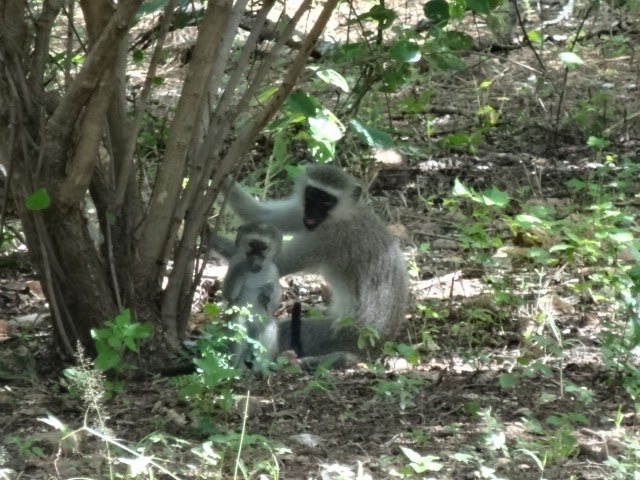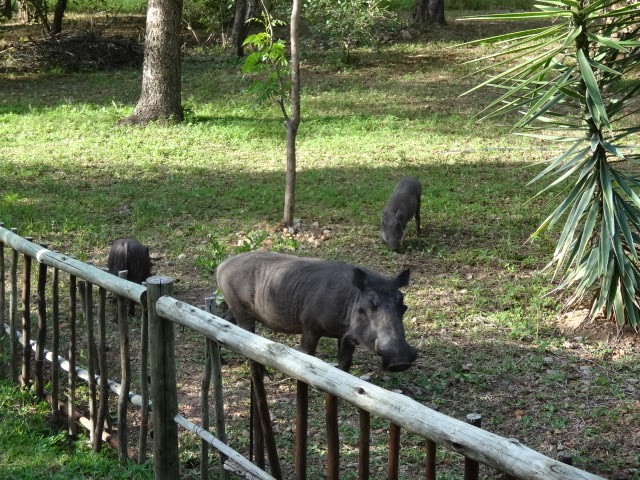 |
| We have a better view of sunset during this second stay in Bali. |
“Sightings on the Beach in Bali”
 |
| Motorbikes have to navigate crossing the river to continue on the beach. |
If you had an opportunity to read yesterday’s post, “Part 1…Foreign currency while traveling” today’s post will make a lot more sense. Please click here if you missed it.
Sure, it’s a lot of mumbo jumbo about foreign currency and ways we’ve found to save money in regard to exchange rates and currency acquisition. For those of you who are our beloved “armchair readers,” we hope we haven’t bored you with this information which may be meaningless to you.
Perhaps, you could share the above link with friends and family who may be traveling outside their home country. We often hear from our readers who’ve shared our travel information with others and we’re so appreciative of each and every one of you for doing so.
One of the challenges of using foreign currency, particularly for us traveling to so many countries, is avoiding leaving a country with a wad of foreign currency or even the annoyance of a handful of small bills and change.
 |
| Gorgeous flowers blooming by the pool. |
There are a few simple steps we’ve taken when we get currency at an ATM, not only the first day when we’ve entered the country but at other times along the way when we’re needing more.
Many ATMs have restrictions on how much currency a user can take at any given time. It depends on the risk of theft in the area, banking laws and how much currency the machine can manage. It’s also based on how frequently the stores of currency are restocked.
In Bali, after several stops to ATMs in a variety of locations, we’ve found the restrictions for currency distribution are more often in lesser amounts than the predetermined amount we’ve established with our bank in the US (for security reasons).
As a result, for us, having multiple bank accounts enables us to continue to enter another debit card to continue to collect more currency. However, most travelers (for pleasure) may only have one or two accounts. If you have a second account, say a savings account, you can set that account to handle also ATM transactions.
 |
| Sun filtering through storm clouds. |
In the US there are regulations of how many transactions you can move “out,” not “in” to a savings account. It’s important to know this if you’ll be using a savings account frequently for currency withdrawals.
For those who generally don’t use ATMs, always verify you have sufficient funds in the account you’ll be using to acquire currency. There’s no margin of error here of which most are well aware if regularly using ATMs.
Surprisingly, we’ve met many travelers, especially those who haven’t quite stepped up to modern technology, who’ve never used online banking or even ATMs.
Before they travel, they physically visit their banks make a large cash withdrawal to handle what they assume will be sufficient for their entire holiday/vacation. Often, this requires advance notification for foreign currency. As a result the travelers ends up carrying huge amounts of currency earlier than needed. This is itself is a security risk.
 |
| Another sunset view. |
We’ve encountered travelers with only one credit card which may have a limited amount of credit available or remaining after other expenditures. This could be a disaster when traveling, especially in addition to not having set up their bank accounts to use ATMs.
Once they arrive at their destination if they haven’t already done it at their bank, they exchange the currency to that of the country(s) they’re visiting at a currency exchange facility or at their hotel/ship, etc. Again, we can’t encourage you more than to avoid currency exchange facilities. See yesterday’s post for more details.
We only use online banking. We can’t walk into our bank. We’ve established an added layer of security using a VPN (virtual private network), an app for which we pay an annual fee to Hotspot Shield. However, if you go to their site here you can sign up for a free account to use while traveling which is available for laptops, tablets and smart phones.
 |
| We rarely edit our photos. There’s simply too many to take the time. The change in sunset colors appears exactly as we took these photos. |
If you use the Hotspot Shield free account, you’ll have a bar at the top of any webpage encouraging you to sign up for the paid account. Ignore this while traveling. It’s quick and easy to uninstall the app when you return to your home and the bar will disappear. We use the annual fee based app (without the bar) since we’re always traveling, but this app has security benefits you may appreciate even if you don’t travel.
Depending on the level of security offered by your bank, in most cases you can view your accounts online from anywhere in the world without using a VPN if you have some type of security software. This is important to check into sooner rather than later.
Do not conduct banking an any public unsecured WiFi hotspots! Often cruisers rush to the free Wi-Fi locations at any given port of call and conduct business. This is very risky!
 |
| Another colorful view. |
Anyway, on to the most economic means of handling what could prove to be “leftover currency” which we always make every effort to avoid. Early in our travels, before we were as diligent as we are now, we left the country of Kenya with KES 1000. Kenyan Shillings are impossible to exchange outside of Kenya. There were only valued at US $9.88, IDR 128,751 but we could have easily ended up with considerably more.
It required that single experience to teach us that we’d never leave a country with their currency stuffing our wallets unless we knew we’d have a specific use for it such as Australian dollars, which we’ll continue to use over the next six months until we head to the US to visit family and friends. (Wow! We can’t believe we’ll be on our way to the US in six months!)
We’ve since learned that before we make our first ATM visit in a new country we estimate as closely as possible how much we’ll actually use. For longer stays, we may get cash as needed on multiple occasions.
 |
| Recently, with lots of clouds and rain, we’d taken few sunset photos. |
For short stays such as when we were in Singapore for one week using the SGD, Singapore dollar, or when in any country for any period of time, we carefully calculate our needs for the stay asking ourselves the following questions:
1. Do taxis and driving services accept credit cards?
2. What is the tipping policy in the country? Will we need currency for tips? What will we need for additional cash tips on cruises, at resorts/hotels or vacation villas?
3. Will we be able to pay entirely for our hotel/resort stay using a credit card?
4. Do we have sufficient, appropriate currency for making purchases at shops/restaurants located at various ports of call when cruising? Find out in advance as to the currency used at a particular port of call. Use a local ATM. Don’t exchange the cash in your wallet.
5. Have we signed up for any private tours or charters or sightseeing expeditions that require cash payments at the time of service?
6. Do we have sufficient cash for incidentals such as a market, pharmacy, a coffee shop or food at a roadside stand?
7. Do we need currency to pay for data/phone SIM cards?
Based on your use of services and products this list could go on and on. It’s not a bad idea to make a note of estimated amounts you may spend during your holiday/vacation.
During every stay, we check how much currency we have remaining, asking ourselves these same questions. In the case in Bali, as mentioned in yesterday’s post, we use more currency than in any other country we’ve visited to date.
 |
| Local farming structures with a few nearby cows. |
With whatever we have left which if carefully planned won’t be more than we intend to use to pay tips, drivers and a possible beverage at the airport. Recently, while at the airport leaving Vietnam, we had an extra US $15, VND 334,553, IDR 195,563. We used the leftover currency to purchase nuts for the long flight in the event the food wouldn’t meet my dietary restrictions. It didn’t, and those nuts were a lifesaver for me while Tom ate both of our dinners on the flight.
While we lived at Trinity Beach, Australia, we decided to see if we could survive three months without ever using visiting an ATM or using any Australian dollars. Instead, we entirely used credit cards. We never needed a single AU dollar! That was the exception. Australia is much like the US that way, credit cards are used everywhere.
There you have it folks, our detailed analysis of currency while traveling. If we haven’t addressed an area of interest to you, please feel free to write in the comments section below. We’ll be happy to reply with 12 hours, barring no power or Wi-Fi outage!
Have a great day!
Photo from one year ago today, October 13, 2015:
 |
| Breadfruit was growing in the yard in Fiji, a popular item in the islands. Here’s a good article on breadfruit. We’d love to try this which is the size of a grapefruit, but it contains 26 grams of carbohydrates and 11 grams of sugar in 1/4 of a fruit. For more details, please click here. |






















